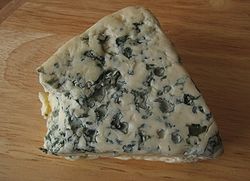Abstract
Yeast microflora on the surface and interior of Rokpol cheese was examined for cheeses produced at three dairies located in Lower Silesia, Poland. Yeast populations on the surface of the cheeses ranged from 105–109 cfu/g, but were 10–100 times lower for interior samples. The occurrence and proportions of yeast species varied, depending on the dairy plant and cheese sample. The most frequently isolated species were: Candida famata and C. spherica, followed by C. intermedia and Geotrichum sp. Other species such as Saccharomyces kluyveri, C. kefyr and C. lipolytica were found occasionally. Extracellular and intracellular proteolytic and lipolytic activities were examined for 39 isolates of C. famata.
This page is based on this
Wikipedia article Text is available under the
CC BY-SA 4.0 license; additional terms may apply.
Images, videos and audio are available under their respective licenses.
